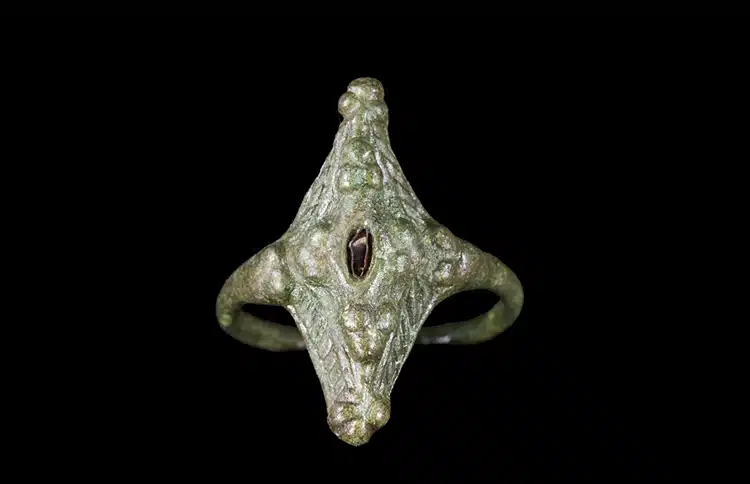
Photo: National Museums Scotland
Over a thousand years ago, a people called the Picts dominated northern Scotland. Dubbed “Picti” by the Romans when the latter encountered these “painted people,” these peoples still offer a certain level of historical mystery. In an effort to understand the ancient Dark Age people better, University of Aberdeen’s Professor of Archaeology, Gordon Noble, has been excavating the remains of a Pictish settlement near the modern town of Burghead in Moray, Scotland. On the last day of the dig, a volunteer discovered a particularly exciting find. John Ralph, an Aberdeen alum, unearthed a crusted ring, which, upon cleaning, turned out to be an incredible example of Pictish jewelry.
Over the past three years, the dig had been investigating the ancient Pictish fort and settlement that once lay in Moray. Ralph joined the latest two-week stint of digging due to his enthusiasm for archeology. After many false alarms digging through the dirt, he found something intriguing in the soil on his last day. Showing it to another volunteer, he began to suspect this might be a true artifact.
According to Professor Noble, in a university statement, “Even before the conservation work we could see it was something really exciting as despite more than a thousand years in the ground we could see glints of the possible garnet setting. There are very few Pictish rings which have ever been discovered and those we do know about usually come from hoards which were placed in the ground deliberately for safekeeping in some way. We certainly weren’t expecting to find something like this lying around the floor of what was once a house but that had appeared of low significance so, in typical fashion, we had left work on it until the final day of the dig.”
Ralph adds, “It is a real thrill to dig up an artifact in the knowledge that you are probably the first person to see it for 1000-1500 years. It becomes a real guessing game of who owned it, what did they use it for and how was it lost.”
Noble explains that future efforts will look for the ring’s background, both owner and creation: “We have some other evidence of metalworking and the number of buildings we have uncovered is quite striking. This further indicator of the high-status production of metalwork adds to the growing evidence that Burghead was a really significant seat of power in the Pictish period.”
The ring is kite-shaped and strikingly intricate with raised designs. At the center is a garnet or perhaps a chip of red glass. It was a shockingly rich object to discover in a portion of the ancient site that was thought to be a humble home. The ring is between 1,500 and 1,000 years old, as by 1000 CE the Picts had been subsumed by the Gaels.
The ring is now at the National Museum where it is undergoing research and conservation efforts. As the modern-day Scottish continue to learn about the ancient Picts, the ring will form one piece of a very long puzzle in the nation’s history.
An ancient Pictish ring, which is over 1,000 years old, was recently discovered on an archeological dig in Scotland.
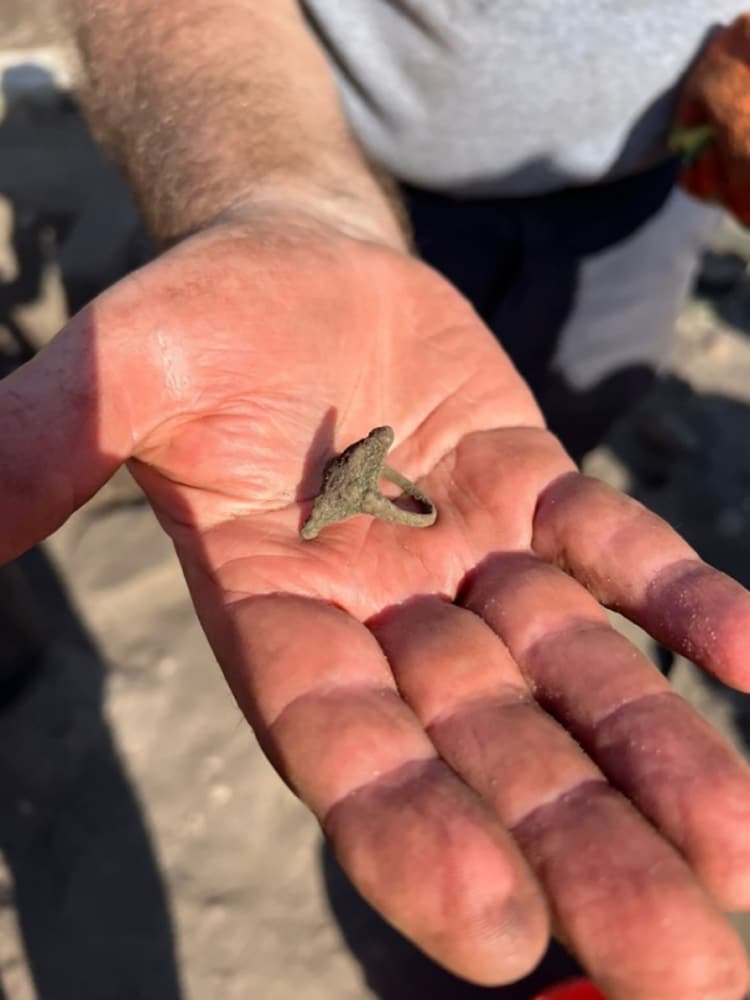
The intact ring. (Photo: University of Aberdeen)
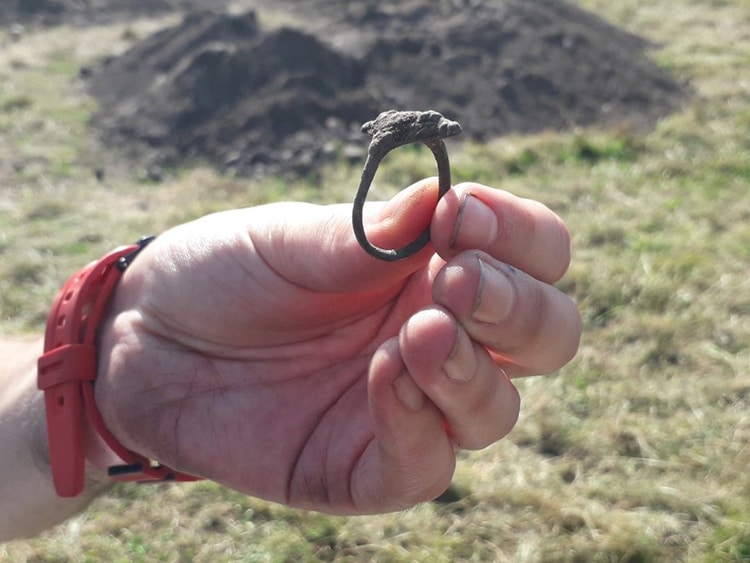
The ring as found. (Photo: University of Aberdeen)
The impressive find will help researchers learn more about these peoples from the Early Middle Ages, as their history is shrouded in mystery.

Caked in dirt, but still impressive. (Photo: University of Aberdeen)
Volunteer John Ralph unearthed the ring while excavating an area that was once a Pictish fort and settlement.
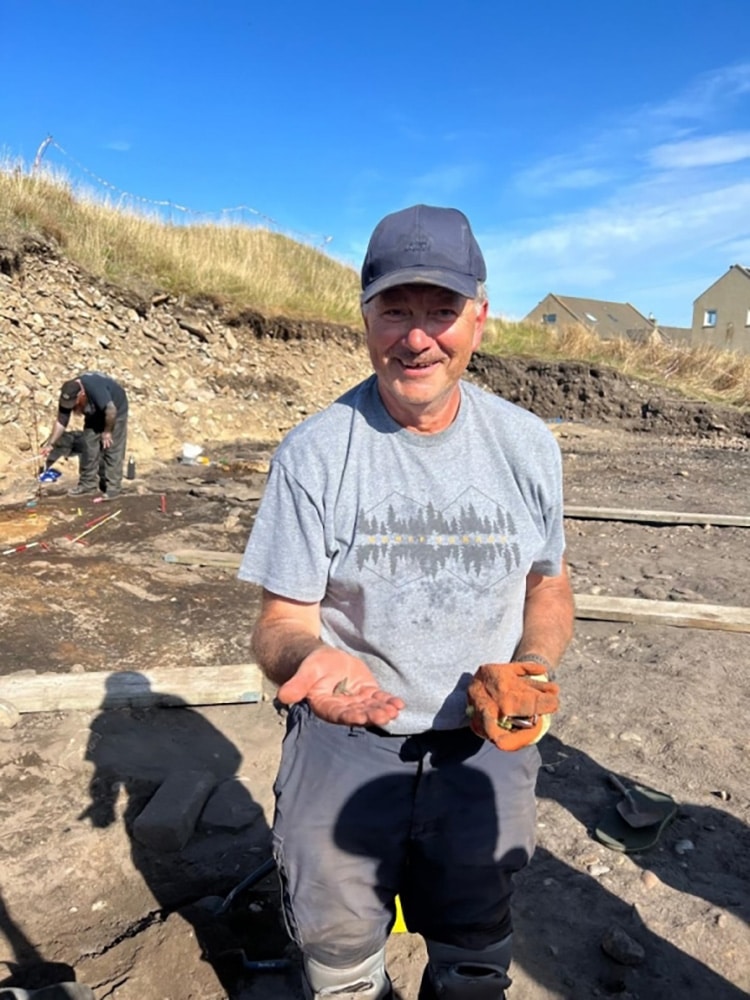
John Ralph and his discovery. (Photo: University of Aberdeen)
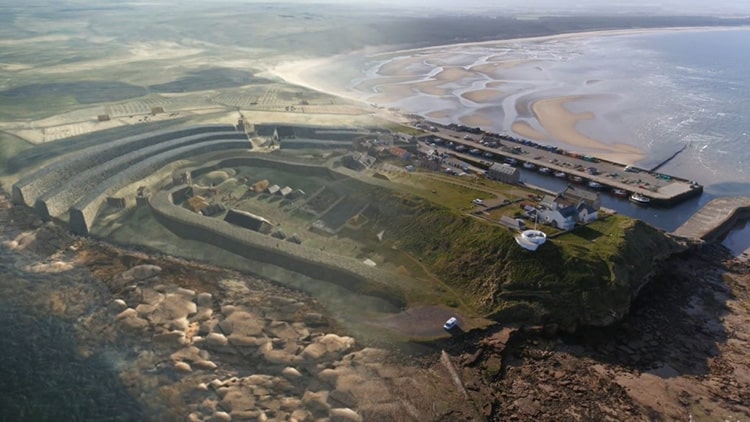
Burghead as imagined by artist Alice Watterson. (Photo: University of Aberdeen)
h/t: [Smithsonian Magazine]
Related Articles:
British Man With a Metal Detector Stumbles Upon 52,000 Ancient Coins Worth $500K
Ancient Roman Mosaic of Marine Life Discovered in England
Trove of Persian Gold Coins Discovered in Ancient Greek City
Roman Road Is Found Buried Under an English Village Schoolyard
